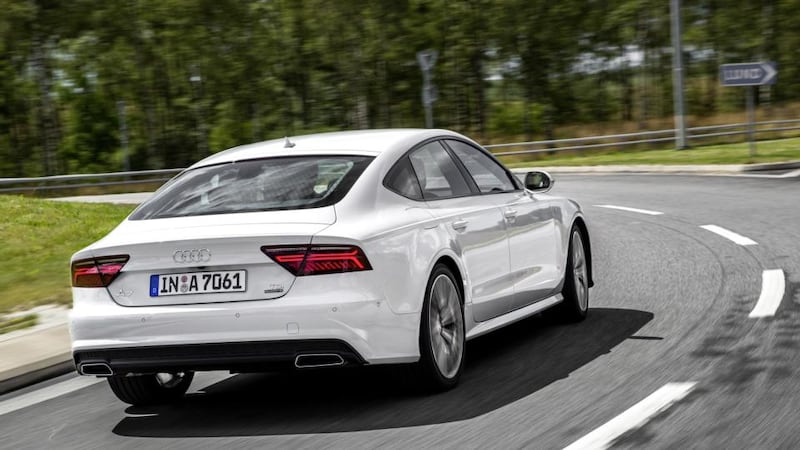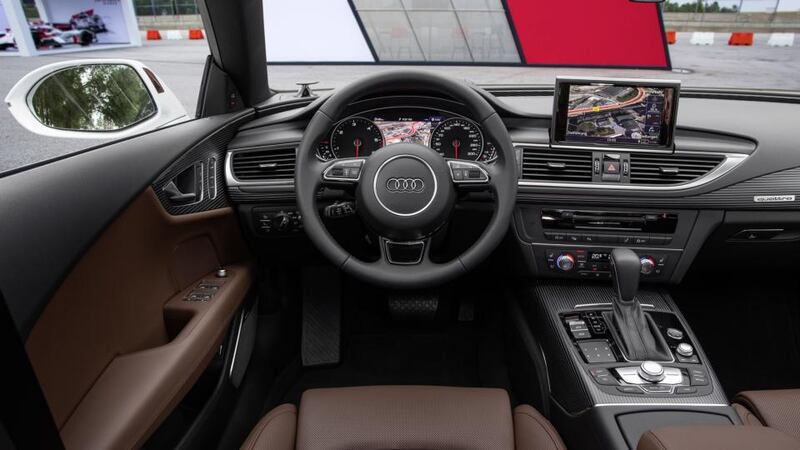Big conventionally-powered car engines are not going away any time soon because dramatic reductions in emissions levels are giving them a longer lease of life.
That seems to be the logic behind Audi’s revised A7 Sportback model, which has an entry level 3.0 litre engine producing only 122 grams of CO2 per kilometre and has a claimed fuel consumption of only 4.7 litres per 100 kilometres. Even the A7’s highest rated engine manages a respectable 162 g/km.
The A7 is the latest Audi car to be adapted for an "Ultra" designation, cars designed to be best in class in terms of emissions efficiency but matching or equalling the power and performance of competitors. The new A7 does not appear to have suffered unduly in terms of its output, despite all the tweaking - it has a 0 to 100 km/h time of 7.3 seconds, an impressive figure for a car of this size.


The A7 is not a big seller - 53 were sold here last year - but then an entry level price of about €67,500 for a car that has a sports rather than a luxury saloon profile means you need to be a committed buyer. Interestingly, 85 per cent of have buyers opted for Quattro four wheel drive systems on the A7.
The latest version improves on the model it replaces by offering plenty of technology while retaining one of Audi’s best designs and performance levels. It is not, however, a sports car as its styling might suggest - rather a car with more good manners than outright driver feedback.
The S-Tronic automatic gearbox has also been improved and is now a highly polished seven-speed system that gives instant feedback and a lovely smooth range of performance. The A7 now makes city driving a good deal more relaxed while not sacrificing anything when it comes to motorway performance. This gearbox refinement is also something competitors could learn from because of its accuracy and delivery of exactly what you want, when you want it.
Its best attributes are its interior finish and the overall shape, which makes it a much more attractive car than its main rival, the Mercedes CLS. Controls and instrumentation are all cleverly designed and located and space, at least in the front, is generous and adds to the luxury feel of the car.
Full pricing and specification on the car is still some time away as the car won’t be on sale until November but there will be three engine options: the 3.0 TDi entry unit with 218 BHP (also available on a Quattro version); a 272 horse power S-Tronic and a 320 BHP b-turbo. LED lights and acoustic glazing will be standard. There will be various other options such as a technology pack with the Audi Connect system; satellite navigation; Bose music system; adaptive cruise control and so on.
The styling of the car has been revised, but only slightly, with things such as new grille features. The LED headlights are now a much smarter feature on the car. One other very notable feature of the car is the impact of that acoustic glass, which means city and motorway driving are an altogether more pleasant and relaxing experience and show exactly where some competitors might improve.
Quattro four wheel drive with its premium pricing does seem an unnecessary extravagance for the A7 because, while it has the power, it is not really a seriously performance oriented car. Therefore the front wheel drive “Ultra” seems a far more attractive option, especially when it comes to road tax and running costs.
The A4 is the next car due to be classified as “Ultra” by Audi and it will be introduced early next year and sold alongside the standard 2.0 litre diesel. Audi expects the “Ultra” version of the A4 to make a significant impact on its competitors with fuel consumption figures and emissions levels that will pose a serious challenge to others.









